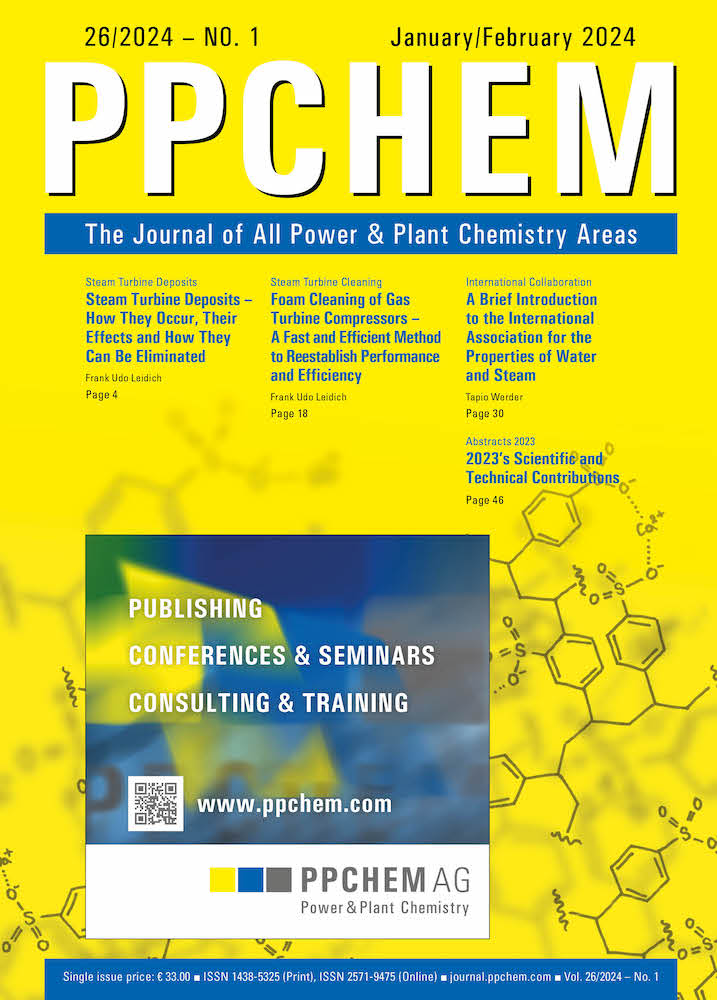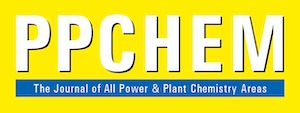
For members only
ABSTRACTS
Steam Turbine Deposits – How They Occur, Their Effects and How They Can Be Eliminated
Frank Udo Leidich
During operation, impurities can enter the water-steam cycle (WSC) with the make-up water, through leaks or with the process condensate return and cause corrosion and deposits. Deposits can form at any point in the WSC, depending on the composition and local conditions (pressure, temperature, flow conditions). Deposits are formed from dissolved and suspended substances that are transported from the point of formation to the point of deposition in the WSC with the water or steam flow. The deposits formed on the turbine blades not only disrupt the flow around the blades, they also increase the pressure loss between the turbine inlet and outlet and thus reduce the efficiency of the overall process.
Three methods for removing turbine deposits have proven to be particularly effective, whereby each of the methods mentioned has specific advantages and disadvantages which will be discussed in this article.
PPCHEM® 2024, 26(1), 4–13
For Members only
Foam Cleaning of Gas Turbine Compressors – A Fast and Efficient Method to Reestablish Performance and Efficiency
Frank Udo Leidich
Especially in industrial environments, gas turbines (GTs) suffer from performance losses and efficiency losses due to compressor fouling. Compressor fouling is caused by soot, dust, salt spray and other airborne contaminants that are drawn into the compressor with the combustion air and are not fully retained by the air intake filters. Another cause of deposits on the compressor blades is the water used for fogging or high fogging if the water quality does not meet the purity requirements according to the original equipment manufacturer (OEM) specifications.
Depending on the pollutant load in the combustion air, GT compressors must be cleaned regularly to remove all deposits and restore the efficiency of the compressor. There are various methods for cleaning. These methods are discussed here.
PPCHEM® 2024, 26(1), 18–22
For Members only
A Brief Introduction to the International Association for the Properties of Water and Steam
Tapio Werder
This paper aims to offer a concise introduction to the International Association for the Properties of Water and Steam (IAPWS) in response to requests of PPCHEM readers. It briefly discusses the advancements in steam property research in the early 20th century and the establishment of international collaboration through the first international steam table conference held in London in 1929. Due to the limited space available, the article presents only a selection of the most important events and facts. It further outlines the organization’s activities, which encompass annual meetings, international conferences, working groups, and the creation of formulations, guidelines, releases, and certified research requirements.
PPCHEM® 2024, 26(1), 30–34
For Members only
2023’s Scientific and Technical Contributions
PPCHEM® 2024, 26(1), 46–53


